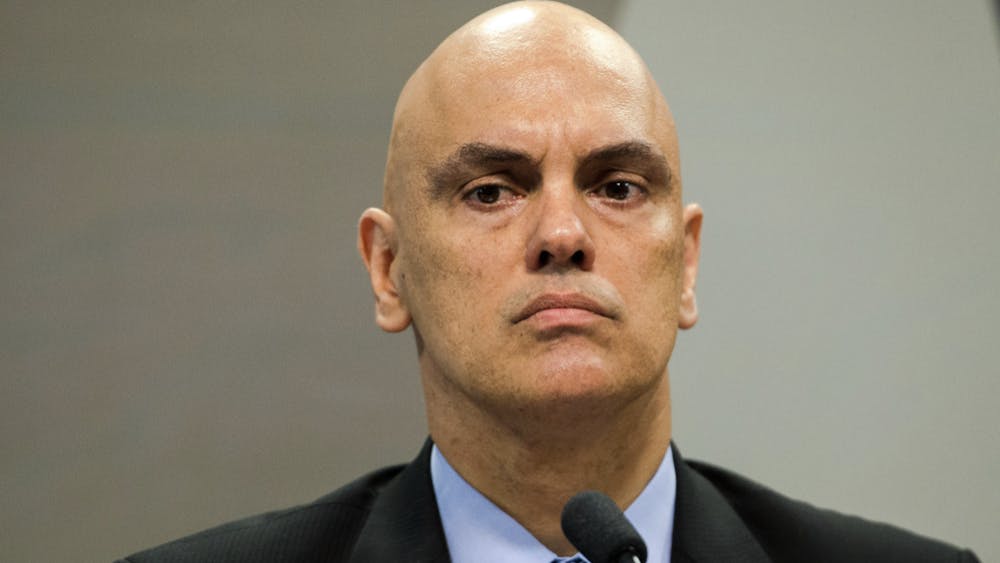It is painful to watch the University of Notre Dame re-file its lawsuit challenging the Obama administration’s compromise exemption in the Affordable Care Act that creates a buffer for religiously affiliated hospitals, universities and social service groups that oppose the practice of birth control. For me, it is an interfamily squabble that should be avoided. My university is suing my government — both have been positive influences in developing my character and being. However, on this issue where the University contends that the law violates its freedom to practice religion without government interference, Notre Dame is in the wrong. Notre Dame attempts to limit the rendering of things that are Caesar’s unto God’s disciples.
First and foremost, Notre Dame chooses to insure its assets and personnel in a manner that uses a secular, financial bottom-line analysis, which has nothing to do with its Catholic mission. Notre Dame does not offer free medical service to those it employs, let alone to the general public or the downtrodden, homeless or defenseless within the surrounding community. It is not a medical wing of Catholic Charities — witness its bookstore prices for those of little faith. Rather, it enjoys many governmental advantages, as does any religious academic institution, through which it can freely practice and teach its religious dogma, prejudices, leanings or whims as an educational entity.
Secondly, Notre Dame — or any religious-affiliated institution ranging from Liberty University to Brigham Young University — cannot be granted carte blanche autonomy in the name of religious rights in order to trample an individual’s rights simply because that individual chooses to cross the threshold of a campus perimeter. The ACA specifically grants the religious exemption by determining religious institutions as those that only employ members of its own faith, i.e., they are churches. It, for good reason, does not exempt religious-affiliated hospitals, charities or universities that employs or provides services to others outside that specific institution’s affiliated faith.
President Obama, in an effort to accommodate and remove religiously-affiliated organizations like Notre Dame from directly paying for contraceptives, thereby preserving their convictions, approved a buffer mechanism by modifying the mandate. Now insurers or the health plan’s outside administrator will pay for the birth control coverage for students and employees — theoretically of other faiths — while establishing a way to reimburse the insurer or administrator. Unfortunately, Notre Dame’s problem is that its secular financial decision to insure its own assets and personnel keeps it squarely in the buffer zone. Therefore, Notre Dame prefers to maintain its strictly secularly focused bottom-line current-cost financial models and arrangements in favor of a lawsuit.
Notre Dame has chosen the National Rifle Association’s tactic of mounting opposition to any and all regulatory changes under the guise of constitutional protections. Frankly, the University’s odds at winning in the U.S. Supreme Court are good given the stodgily recalcitrant conservative types like Antonin Scalia who must decide if — in his normal view on how to rule on a case — he conjures a way to rationalize how the founding fathers would have even dared imagine the concept of contraceptives when they drafted our constitution. His 18th century mind may yet produce another 21st century debacle.
It is, however, heartening to see that three Notre Dame women who are students directly affected by this ruling were recently allowed to join the lawsuit with the government against the University in the 7th U.S. Circuit Court of Appeals. If I could, I would ask to be the fourth, and I would allow my name to be attached despite fearing retaliation on campus. But for now, we can but offer best wishes for our three “Jane Does” as the case proceeds.
Notre Dame remains an American “rigorist,” as Pope Francis called such recalcitrance. The University, in an attempt to be known as “the” Catholic American educational institution, becomes embroiled in what the pope described as “in small things, small-minded rules … the rigorist washes his hands so that he leaves it to the commandments.” [Pope Francis’ Aug. 19, 2013 interview with “America Magazine” discussing the Catholic focus of faith]. In many ways the University’s actions are emblematic of past failures within the Catholic Church like clinging onto man-made dogma about contraception while millions become infected with HIV in Africa.
University President Rev. John I. Jenkins, C.S.C, claims, “We do not seek to impose our religious beliefs on others; we simply ask that the government not impose its values on the university when those values conflict with our religious teachings.” University spokesman Paul Browne said, “If government is allowed to entangle a religious institution in one area contrary to conscience, it’s given license to do so in others.”
Yet, as both men insist that the suit is not about contraception, it really is about money and medical wellness that just happens to include contraception. A 2011 Guttmacher Institute study found that 58 percent of contraceptive pill users — including one of my Catholic nieces who was prescribed the pill while in middle school — take the medication for purposes other than pregnancy prevention. The slippery slope this suit creates will benefit religious snake charmers and bloodletting advocates, believers of natural healing without medication and others who behave more cult-like than bona fide longstanding churchgoers. We see on what side Notre Dame has placed its money.
Gary J. Caruso, Notre Dame ‘73, serves in the Department of Homeland Security and was a legislative and public affairs director at the U.S. House of Representatives and in President Clinton’s administration. His column appears every other Friday. Contact him at GaryJCaruso@alumni.nd.edu The views expressed in this column are those of the author and not necessarily those of The Observer.













